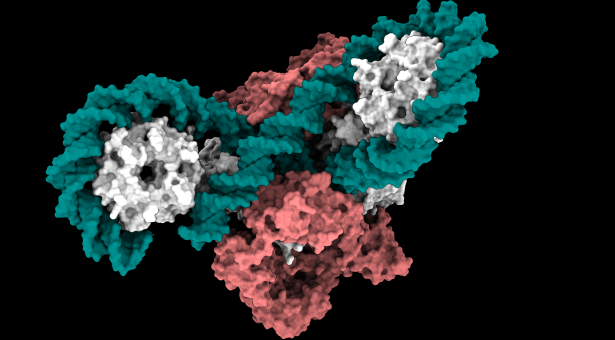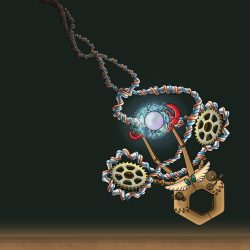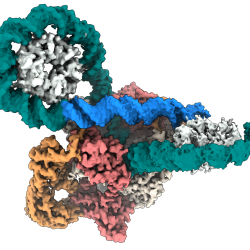
An international collaboration has made a breakthrough in our understanding of DNA gyrase, a vital bacterial enzyme and key antibiotic target.
Researchers from the John Innes Centre, Durham University and Jagiellonian University (Poland) used high-resolution cryo-electron microscopy (cryo-EM) to reveal unprecedented mechanical detail of gyrase's action on DNA.
The discovery opens doors for new antibiotic therapies against resistant bacteria. It also highlights the transformative influence of cryo-EM on discovery science, says Dr. Dmitry Ghilarov, one of the authors of the study and a group leader at the John Innes Centre:
"We have spoken for years of gyrase as of a molecular motor, but thanks to this powerful technology we see much more of it and in true context. I was blown away by the visual similarity of what we observed with a 'belt and pulley' system used in mechanical devices.
"To observe a complete DNA loop, not just small fragments, was so satisfying after years of hypothesizing and drawing cartoons based on biochemical data. This is how cryo-EM is revolutionising all the fields of modern biology."
DNA gyrase, present in bacteria but absent in humans, plays a crucial role in supercoiling DNA, a necessary process for bacterial survival.
It operates like a tiny molecular machine, carefully twisting bacterial DNA. This twisting, known as supercoiling, is like winding an elastic band: as it twists, it coils tighter and tighter.
Unlike a band that would unwind if released, DNA gyrase stabilises DNA's supercoiled form, making it functional for bacteria.
The enzyme wraps DNA in a 'figure-of-eight' loop, then precisely breaks and passes strands through each other, resealing them afterward. This is a delicate process - if the DNA remained broken, it would be lethal to the bacteria.
Antibiotics such as fluoroquinolones exploit this vulnerability by preventing DNA resealing, which kills the bacterial cell. However, resistance to these antibiotics is growing, so a deeper understanding of how gyrase functions is urgently needed.
Using cryo-electron microscopy, the team captured a snapshot of gyrase at work, revealing how it wraps DNA through outstretched protein 'arms' to form the figure-of-eight loop.
This finding updates the conventional view of gyrase's mechanism, which has been studied for decades. The images show the enzyme as a highly coordinated, multi-part system, with each piece moving in a precise sequence to achieve DNA supercoiling.
This discovery not only advances our knowledge of bacterial biology but also holds promise for new antibiotics designed to block gyrase in a more targeted way, bypassing existing resistance mechanisms.
With this high-resolution structure as a guide, researchers aim to take additional snapshots of the enzyme in various stages, building a molecular movie of how gyrase works.
Co-author Professor Jonathan Heddle of Durham University, said: "The results suggested the exact position and the order of the complex moving parts of the enzyme during when the supercoiling process occurs were not quite as we previously thought, and this could impact how we design new inhibitors."
'Structural basis of chiral wrap and T-segment capture by Escherichia coli DNA gyrase', (2024), Elizabeth Michalczyk, Zuzanna Pakosz-Stępień, Jonathon D. Liston, Olivia Gittins, Marta Pabis, Jonathan G. Heddle, and Dmitry Ghilarov, appears in PNAS.
Image Caption – A model of gyrase-DNA complex determined in the study. Gyrase consists of two proteins, A (white) and B (red) whilst the supercoiled DNA loop is shown in turquoise
Credit – Dmitry Ghilarov








